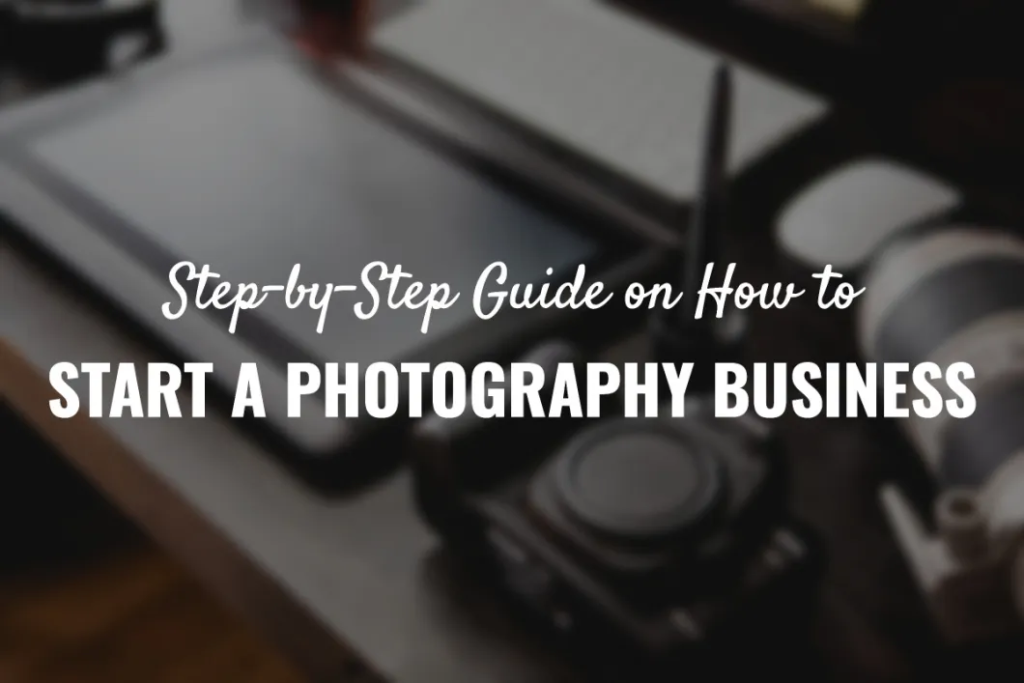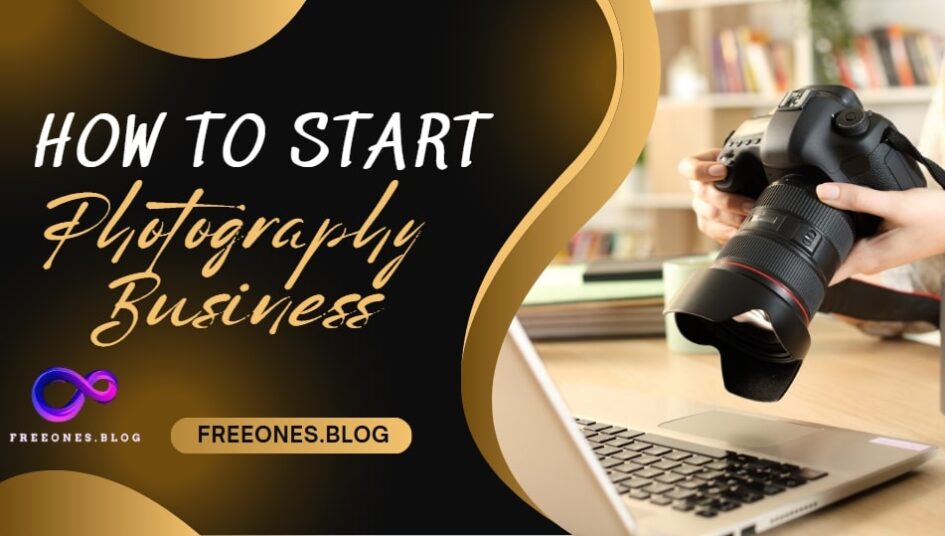Starting a photography business can be an exciting and rewarding venture, whether you’re a passionate hobbyist looking to turn your craft into a career or a professional seeking to expand your client base. However, the process of launching a photography business requires careful planning, an understanding of your market, and the right equipment. This guide will walk you through the essential steps on how to start a photography business from home, how to do it with little or no money, and how to create a solid photography business plan to set yourself up for success.
1. Understanding the Basics: How to Start a Photography Business
Before diving into the technical and financial aspects, it’s important to have a clear understanding of the photography business itself. At its core, starting a photography business involves offering photography services to clients—this could range from portraits, weddings, and events to commercial photography and real estate shoots.

What You Need to Get Started
- Photography Skills: First and foremost, you should have a solid understanding of photography basics—composition, lighting, camera settings, and editing. A portfolio showcasing your best work is essential to attract potential clients.
- Business Skills: Beyond technical skills, running a business requires knowledge of marketing, sales, customer service, and financial management. This is where a photography business plan becomes essential.
- Equipment: Depending on your niche, you’ll need camera gear, lenses, a tripod, lighting equipment, and a good computer with photo-editing software.
2. How to Start a Photography Business from Home
Starting your photography business from home is one of the most cost-effective ways to break into the industry. By operating out of your own space, you can reduce overhead costs like renting office space or a studio. However, even a home-based photography business needs to look professional and have the right infrastructure in place. Here are some steps for success:
1. Set Up a Dedicated Space for Photography
While you don’t need a full-fledged studio, creating a dedicated space for photo shoots in your home will help you maintain a professional image. This could be a room with good natural lighting or a corner equipped with studio lighting. Ensure that the space is clean, uncluttered, and versatile enough to accommodate different types of shoots (e.g., portraits, product photography).
2. Create a Professional Home Office
In addition to your photography space, you’ll need an organized office area where you can manage emails, accounting, and client communication. This could be a simple desk with a computer and a phone line, but it should look neat and be conducive to getting work done.
3. Build a Home Photography Studio on a Budget
If you’re operating on a tight budget, you can still create a functional photography space at home with minimal investment. Basic items like a backdrop, portable lighting kits, and a decent camera can all be found at affordable prices. Consider DIY solutions for backdrops—such as a clean white wall, fabric, or inexpensive photography backdrops from online retailers.
4. Market Your Home-Based Business
Once you have your home setup ready, the next step is to let potential clients know about your services. Set up a professional website, leverage social media platforms, and use word-of-mouth marketing to build your reputation. If you’re unsure about how to get clients, consider doing some free or discounted shoots for friends, family, or local businesses in exchange for referrals and testimonials.
3. How to Start a Photography Business with No Money

Starting a photography business can be expensive, especially if you need high-end equipment and a dedicated studio space. However, it is possible to get started with limited funds by using a more strategic approach.
1. Leverage Existing Equipment
You don’t need the latest camera and lens to start a photography business. Begin by using what you already have. If you already own a DSLR or even a high-quality smartphone with a good camera, you can use those to start building your portfolio and practice. As your business grows and generates income, you can reinvest profits into upgrading your gear.
2. Focus on Low-Cost Marketing Strategies
Instead of spending money on paid advertising, focus on low-cost or free marketing strategies. Create social media profiles on platforms like Instagram, Facebook, and Pinterest to showcase your work. Word-of-mouth referrals and client testimonials can also play a big role in gaining new business, so ask satisfied clients to spread the word.
3. Offer Discounted or Free Shoots for Experience
Another way to kickstart your photography business without money is by offering free or discounted shoots in exchange for experience and portfolio material. You can reach out to friends, family, and local businesses and offer your services for a fraction of the price in exchange for a testimonial or the ability to showcase the images in your portfolio.
4. Consider Renting or Borrowing Equipment
If you need specific equipment for a shoot but can’t afford to buy it, consider renting gear or borrowing it from a friend or colleague. Many photography gear rental companies allow you to rent professional equipment for a fraction of the cost, which can be an excellent way to expand your offerings without a significant financial investment.
5. Partner with Other Small Businesses
Collaborating with other small businesses is an excellent way to offer mutual benefits without needing a large budget. You can partner with local event planners, florists, makeup artists, or venues to get photography gigs in exchange for cross-promotion.
4. The Importance of a Photography Business Plan
Creating a solid photography business plan is crucial for your success, whether you’re working from home or starting with limited funds. A business plan will give you a roadmap for your business and help you stay focused as you grow.
Key Components of a Photography Business Plan
- Executive Summary This section outlines the mission and vision of your photography business. It should explain the services you offer, your target market, and how you plan to operate.
- Market Research Conduct research to understand your competition and target audience. Are you targeting families, couples, or businesses? What other photographers in your area offer similar services, and what sets you apart from them? This will help you define your niche and price your services competitively.
- Service Offerings Clearly define the photography services you plan to offer—whether it’s wedding photography, portrait sessions, or commercial work. For each service, outline the scope, pricing, and any additional offerings (e.g., prints, albums, or digital files).
- Marketing and Sales Strategy In this section, detail how you plan to attract clients. Will you focus on online marketing, referrals, or local advertising? Set measurable goals for increasing your client base over time.
- Financial Plan Although you may be starting with minimal funds, it’s important to create a financial plan that outlines your expenses, pricing strategy, and revenue goals. Include costs for equipment, marketing, business licenses, and insurance. A solid financial plan will help you determine how much you need to charge and how quickly you can expect to break even.
- Growth Strategy As your business grows, you’ll need a plan for scaling up. This could include adding new services, hiring staff, or investing in advanced equipment. Identify opportunities for growth and outline steps to achieve them.

5. Legal and Administrative Considerations
Once you’ve laid the foundation for your photography business plan and are ready to start offering services, you’ll need to handle legal and administrative tasks:
- Register Your Business: Depending on your location, you may need to register your business name and obtain a license to operate.
- Insurance: Look into business insurance to protect yourself and your equipment. This is especially important if you’re working with clients in person or on location.
- Contracts and Invoicing: Always use contracts for client agreements, which outline the scope of work, pricing, and terms of service. Use invoicing software to keep track of payments and manage your finances.
Conclusion: Turning Your Passion into a Photography Business
Starting a photography business can be a fulfilling and profitable endeavor, especially with careful planning and persistence. Whether you are looking to work from home, start with minimal funds, or simply want to establish a strong foundation for your business, following the steps outlined in this guide will help you succeed. Craft a clear photography business plan, build your portfolio, market your services, and stay focused on growing your business over time. If you want to know How Much Do Brokers Charge to Sell a Business? then read my blog which available in Freeones.blog. With determination and the right strategy, you can turn your photography passion into a thriving business.








Leave a Reply